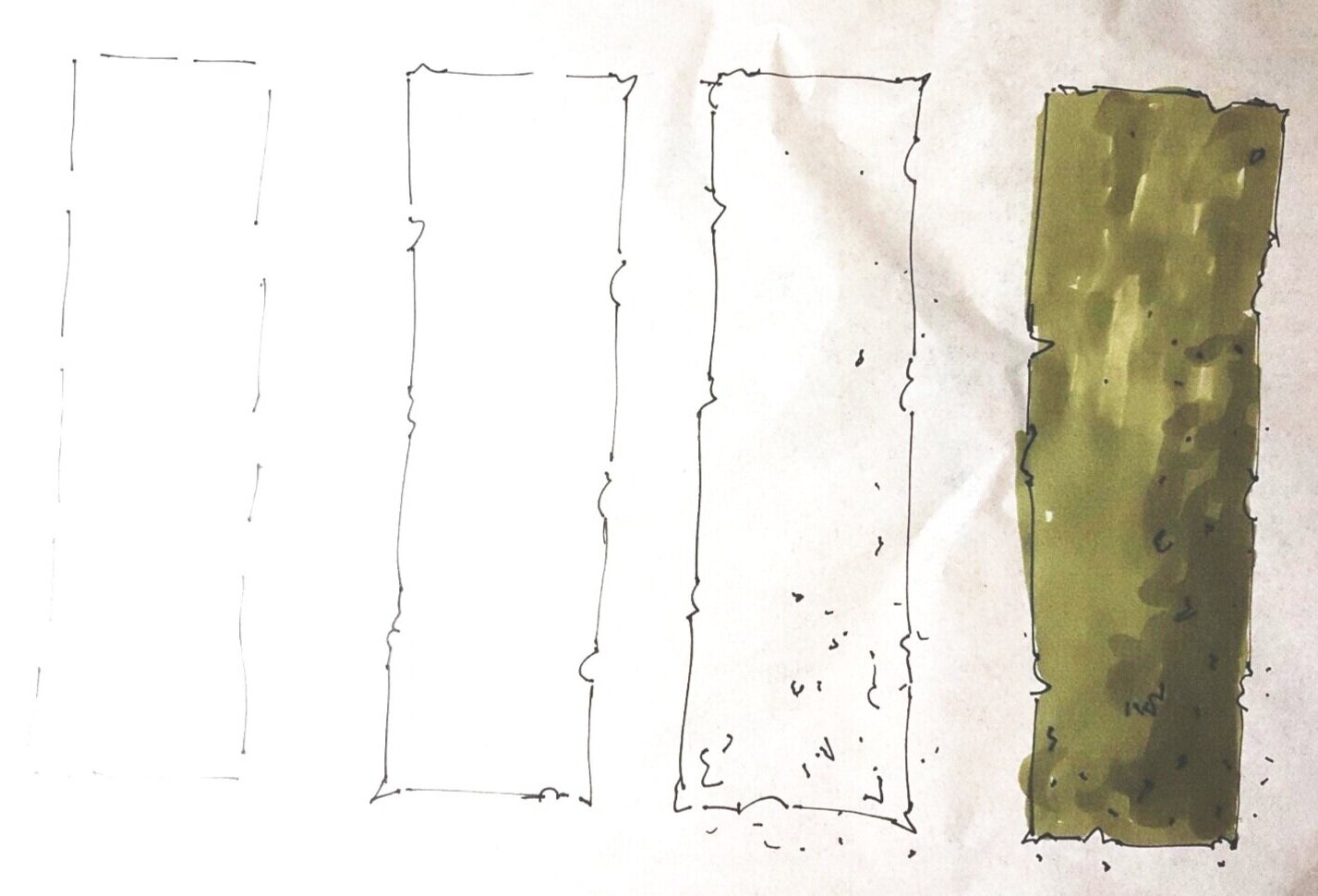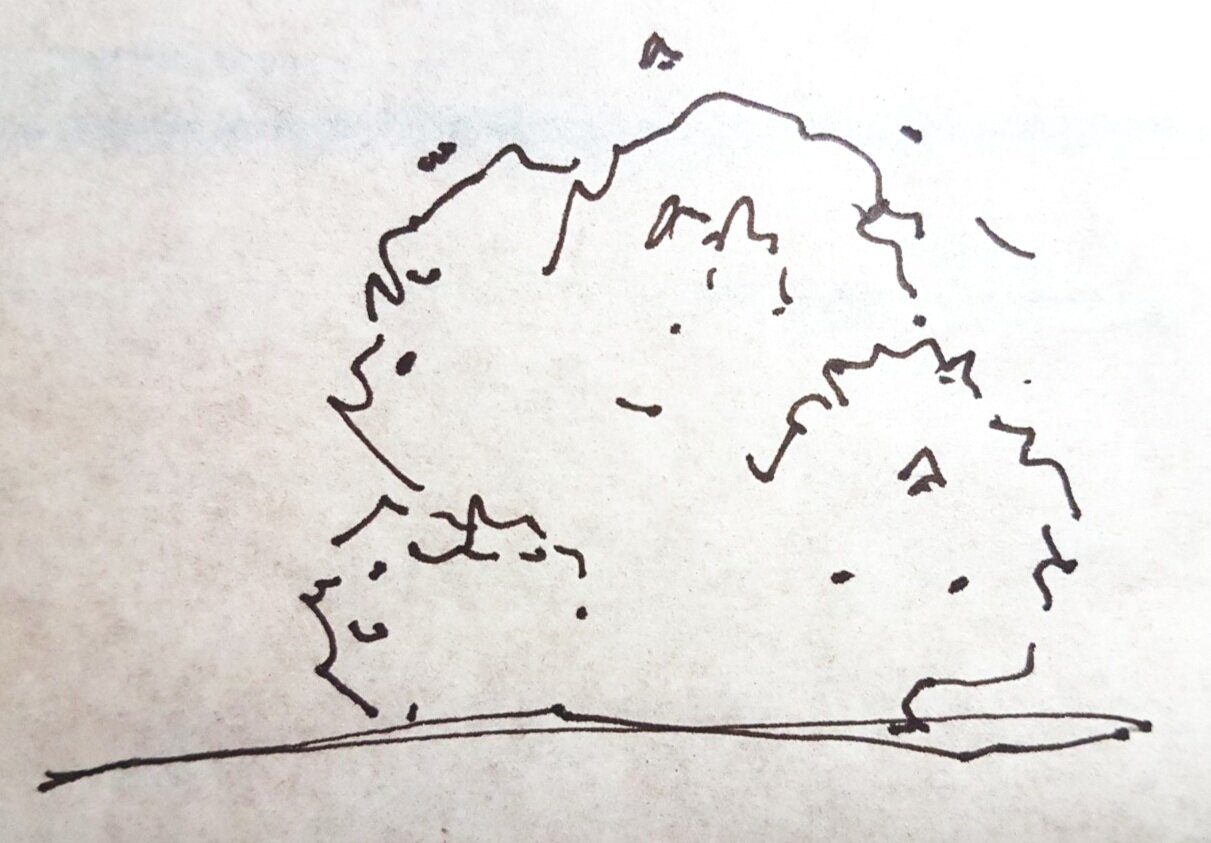Conceptual Drawing in Garden Design
This is aimed at helping students render common elements at the conceptual stage of a garden design
What is the objective?
At conceptual stage for residential jobs, we are trying to create a plan with supporting documentation that helps the client understand your idea. High quality graphics certainly help people understand and fall in love with a design. As you become established within the industry your portfolio will help to sell your ideas. The client is purchasing your ideas based on the previous gardens you have built. In this situation your graphics don’t necessarily play a big part. Until then good quality drawings will help create confidence in your ideas.
People
Inserting people into your drawings helps provide human scale and proportion to your drawings. Below is a Pinterest page which shows examples of people drawn in different styles.
People in Elevation View
Rocks
Rocks in Elevation View
Session Outline
What is the objective?
Drawing plants
Colouring plants
Different mediums for rendering
Drawing Plants
Below is a Pinterest page which shows examples of plants drawn in different styles in both plan view and elevation view.
Plants in Elevation View
Plants in Plan View
1. Getting Ready
You will need a few things at this stage. If you have created a set of inspirational images / mood board, thematic ideas, or design statement grab these.
Next you will need some drawing supplies. Some pens of differing line weights between 0.1 and 1mm thick. Some paper that you wish to present on. This should be compatible with medium that you wish to add colour with.
2. Find a Graphics Style
Some people use the same graphics style for all their projects. Others like to present in a way that brings out the feeling of what it would like to be in the space that they are designing.
Either way, at this point you need to find examples of graphics that you like.
If you are not very artistically inclined, I highly recommend using examples and recreating them as you are learning.
People train and work in art for many years to become good at their craft. You shouldn’t expect to be able to create your own style and method on day 1. For now, let’s recreate someone else’s great work.
3. Trees
From this point we will continue with a fairly common graphics style. There are a few books around that many designers learned from. For some recommendations look under resources on the right hand side.
Evergreen
Deciduous
4. Shrubs
5. Grasses
6. Vertical Space
Colouring
Alcohol Markers
Pencils
Pastel Pencils
Watercolours
Presentations
Resources
Book: Landscape Graphics : Plan, Section, and Perspective Drawing of Landscape Spaces - Grant W. Reid
















